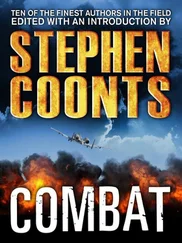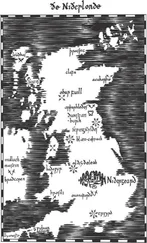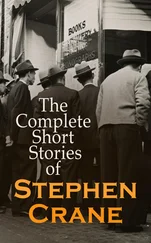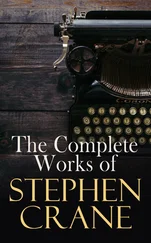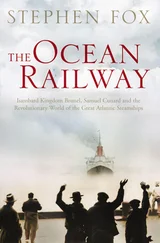Stephen Coonts - The Disciple
Здесь есть возможность читать онлайн «Stephen Coonts - The Disciple» весь текст электронной книги совершенно бесплатно (целиком полную версию без сокращений). В некоторых случаях можно слушать аудио, скачать через торрент в формате fb2 и присутствует краткое содержание. Жанр: Триллер, на английском языке. Описание произведения, (предисловие) а так же отзывы посетителей доступны на портале библиотеки ЛибКат.
- Название:The Disciple
- Автор:
- Жанр:
- Год:неизвестен
- ISBN:нет данных
- Рейтинг книги:4 / 5. Голосов: 1
-
Избранное:Добавить в избранное
- Отзывы:
-
Ваша оценка:
- 80
- 1
- 2
- 3
- 4
- 5
The Disciple: краткое содержание, описание и аннотация
Предлагаем к чтению аннотацию, описание, краткое содержание или предисловие (зависит от того, что написал сам автор книги «The Disciple»). Если вы не нашли необходимую информацию о книге — напишите в комментариях, мы постараемся отыскать её.
The Disciple — читать онлайн бесплатно полную книгу (весь текст) целиком
Ниже представлен текст книги, разбитый по страницам. Система сохранения места последней прочитанной страницы, позволяет с удобством читать онлайн бесплатно книгу «The Disciple», без необходимости каждый раз заново искать на чём Вы остановились. Поставьте закладку, и сможете в любой момент перейти на страницу, на которой закончили чтение.
Интервал:
Закладка:
“Have the bunker’s self-contained survival systems been tested?” I asked.
“My father has spent the last six months supervising the tests and repairing discrepancies,” Davar said. “He was satisfied.”
“Is there only one way in or out?”
“There is another way,” she said, “on the other side of the ridge. The heavy equipment and material needed to excavate the cavern for the bunker came in from a ramp dug on the other side, and the dirt had been removed that way. At the same time, the river below the ramp was straightened and widened, a construction job that provided cover for the bunker construction. When the bunker was complete, the ramp to the bunker was filled with reinforced concrete. A walkway, or ramp, runs through the concrete from the bunker to the riverbank. It is sealed with three bombproof doors, one just inside the entrance, one midway along it and one just outside the bunker. The walkway is almost a kilometer long.”
“Is your family going into the bunker?” G. W. asked.
“Yes,” she said simply, without inflection.
G. W. lit a cigarette with shaking hands. He sucked on it, then flipped ash out the open window, as Davar continued to describe her father’s creation. The ceiling of the bunker had been reinforced with lag bolts and massive steel beams.
“The elevator shaft lies fifty-two meters directly northwest of the center of that wall of the mosque,” she continued and pointed again. “It’s right under that parking lot.”
G. W. flipped his cigarette out the window and glanced at me. After our eyes met, he grabbed the steering wheel and put the truck in motion.
“I want to see the secondary entrance,” I said.
We had to drive a couple of miles through streets that led across the main ridge on top of the bunker, then cross a bridge over the river to get to the best vantage point.
With the truck stopped, I looked the entrance over with a set of binoculars. It was recessed under a rock shelf, set in the middle of what looked like a large highway tunnel filled with concrete. In fact, that was precisely what it was. I could see the roadway along the river where the big trucks had come and gone. The road had been bulldozed and the ground contoured, yet I could see where it had been.
“How long is the secondary tunnel?” I asked Davar.
“Over a kilometer. There are cutouts and bombproof doors at three places in the tunnel to ensure that a blast at the door doesn’t reach the bunker.”
I raised the binoculars and studied the ground above the entrance, which sloped away toward the crest of the ridge at perhaps a twenty-degree angle. The only place I could see that would allow a person to see both entrances was directly atop the brush-covered ridge, right over the center of the bunker. I wondered if that spot was too close to ground zero.
Well, sure as hell, I would soon find out.
As I was looking through the binoculars, G. W. asked Davar, “Who designed this bunker complex?”
“My father.” I sat frozen, staring through the binoculars, trying to control my face.
When I lowered the binoculars G. W. was looking at me with a bemused expression on his face. Apparently the irony of old man Ghobadi designing and building his own tomb had gotten to him, too.
As head of state, the Supreme Leader Ayatollah Ali Khamenei was not involved with the day-to-day political affairs of the legislature. His public appearances were mostly ceremonial and, since he was also guardian of the state religion, often religious. His visits to mosques were shown on television. However, he was the leader of the Party of God, the ruling political party; the IRGC and its intelligence arms answered directly to him; he was the commander-in-chief of the military; he controlled billions of petrodollars off budget; and Ahmadinejad’s government ruled at his pleasure. In short, he and Ahmadinejad were the two most important men in Iran and, some said, the entire Islamic world.
Today, outside the mosque, a television crew waited to film Khamenei as he exited the building. The cameraman began recording when a member of Khamenei’s security team gave him a Hi sign from the doorway, indicating the Supreme Leader had finished his prayers and was making his way toward the door.
He got Khamenei centered in the viewfinder, with people right and left, as the Supreme Leader walked slowly toward the camera, looking right and left, nodding to acknowledge the cheers of the crowd. There were always cheers. This was, perhaps, because Khamenei’s crowds usually consisted of handpicked members of the nonuniformed paramilitary force, the Basij, busloads of whom were ferried around to appear on camera at the proper moment.
The cameraman was taking it all in as the camera automatically focused on the central figure. So he saw the hand and pistol come out of the crowd, and he saw Khamenei recoil from the punch of the first bullet.
He heard muffled shots and saw that there were at least three men shooting into Khamenei, who went down under the fusillade. Still, the guns continued to fire at the figure sprawled on the steps.
Then the shooting stopped. The cameraman could see the crowd milling-he actually lost sight of Khamenei lying on the pavement-and hear the animal sounds from hundreds of human throats.
Then, almost as if by a miracle, a lane cleared and he glimpsed a dozen men stabbing one to death. He tried to keep the scene centered, but the jostling was too much. In seconds the crowd knocked him down.
Mahmoud Ahmadinejad was in conference with his generals, trying to decide upon the hour of the launch. He thought perhaps a night launch would be best, but his generals were trying to talk him out of it.
“Americans fight best at night,” one said. “Every soldier wears night vision goggles, the pilots of their airplanes and helicopters wear them, they have infrared sights… If they should for any reason come over Iran to oppose us, we will give a better account of ourselves during the day.”
“The night doesn’t hide us from them,” the general in charge of antiaircraft defense said. “It merely hides them from us.”
Ahmadinejad frowned. He had bet everything that he could pull off a massive first strike on Iran’s enemies without the Americans getting wind of it. Literally, everything ! Yet his generals assumed that such a deception was unlikely. Worse, they assumed that even though Iran knew how the Americans’ latest ECM magic worked and were prepared to defeat it should the Americans attack, they needed even more of an edge. The moral ascendancy of the infidels over his generals infuriated him. He opened his mouth to blast them, then thought better of it.
“There is a storm moving into the deserts of central Iran,” one general said. “Winds will exceed fifty miles per hour in places, gusts much higher, with a lot of dirt in the air. We hope it will dissipate by midnight Sunday, but it might not.”
Iran was full of foreign spies, and Hazra al-Rashid was dead, Ahmadinejad mused. Only Allah knew what the Americans believed now. Or if they would find the courage to fight Allah’s warriors. It certainly wouldn’t hurt to give his generals the advantage they sought.
“We will launch on Monday, two hours before dawn,” Ahmadinejad said. “If the enemy chooses to counterattack, they must do so during the day.”
The generals nodded their heads. This compromise seemed wise. A chart was consulted to determine the moment of sunrise. Dawn, they decided, could be defined as thirty minutes prior to sunrise. The first wave of missiles would lift off two and a half hours prior to official sunrise.
“Perhaps there will still be enough dirt in the air to hide the launches from the American satellites,” one general said.
Ahmadinejad looked Hosseini-Tash squarely in the eyes. “The missiles will be ready? The nuclear warheads installed?”
Читать дальшеИнтервал:
Закладка:
Похожие книги на «The Disciple»
Представляем Вашему вниманию похожие книги на «The Disciple» списком для выбора. Мы отобрали схожую по названию и смыслу литературу в надежде предоставить читателям больше вариантов отыскать новые, интересные, ещё непрочитанные произведения.
Обсуждение, отзывы о книге «The Disciple» и просто собственные мнения читателей. Оставьте ваши комментарии, напишите, что Вы думаете о произведении, его смысле или главных героях. Укажите что конкретно понравилось, а что нет, и почему Вы так считаете.



